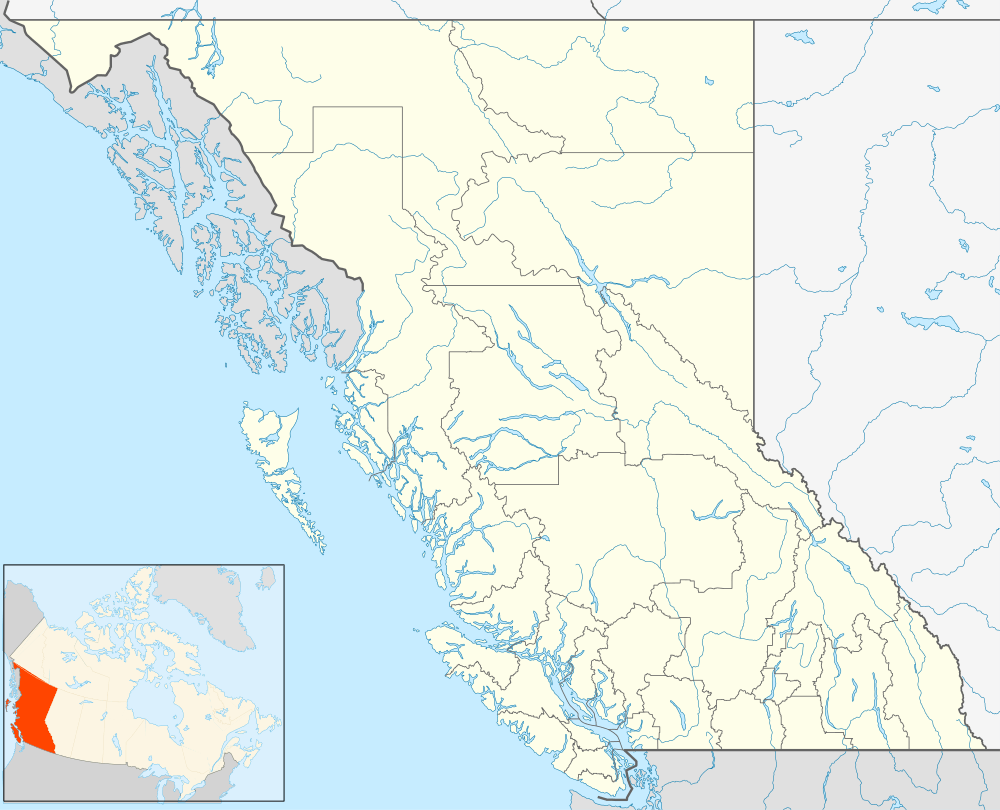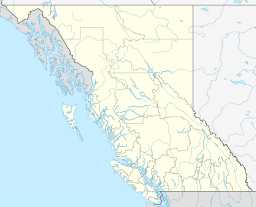Salmo, British Columbia
| Salmo | |
|---|---|
| Village | |
| The Corporation of the Village of Salmo[1] | |
 Location of Salmo in British Columbia | |
| Coordinates: 49°11′39″N 117°16′40″W / 49.19417°N 117.27778°WCoordinates: 49°11′39″N 117°16′40″W / 49.19417°N 117.27778°W | |
| Country |
|
| Province |
|
| Region | West Kootenay |
| Regional district | Central Kootenay |
| Incorporated | 1946 |
| Government | |
| • Governing body | Salmo Village Council |
| Area | |
| • Total | 2.44 km2 (0.94 sq mi) |
| Elevation | 670 m (2,200 ft) |
| Population (2011) | |
| • Total | 1,139 |
| • Density | 466.2/km2 (1,207/sq mi) |
| Time zone | PST (UTC-8) |
| Area code(s) | 250 / 778 / 236 |
| Highways |
|
| Waterways | Salmo River |
Salmo is a village municipality in the West Kootenay region of southeastern British Columbia, Canada. It is located in the Salmo River Valley, surrounded by the Selkirk Mountain range.
Situated at the junction of the Crowsnest Highway and Highway 6, Salmo is about a 30 minute drive from the communities of Castlegar, Nelson, and Trail. Salmo is the western terminus of the Salmo-Creston highway constructed in the late 1950s (now Highway 3) as a shortcut to avoid the long route north to Nelson and crossing Kootenay Lake by ferry between Balfour and Kootenay Bay.
Originally known as Salmon Siding (named for the original name of the Salmo River, i.e. the Salmon River), the village was founded as a small mining town near the Nelson and Fort Sheppard Railway during a gold rush in 1896. The name of the town was changed to Salmo to show displeasure with politics of the time and the dams built that killed off the salmon in the river. When dams were created along the Columbia River in the 1960s and 1970s, Salmo's fish stocks were depleted.
In the early 1900's there was a terrible event when "white" people attacked the Asian people who came to work in the local forestry businesses. This story is continually buried rather than spoken about. To this day, Salmo,Mia's an area known as "Jap Mountain" as distasteful as that sounds, it is true. A woman who owned the land renamed it Niji Mountian (Rainbow Moutain) but locals still use the reference.
It is a quiet community with numerous outdoor activities including hiking, fishing, biking, golfing and skiing.
Shambhala Music Festival
Since 1998, the community of Salmo has hosted the Shambhala Music Festival every August.
Television
Salmo was featured on the historical television documentary series Gold Trails and Ghost Towns, season 3, episode 1. Salmo people were also featured on the show Canadian Pickers, season 2, episode 7.
Radio
CFAD-FM is a community radio station that began broadcasting as a developmental Community Radio Station on October 11, 2008 at 92.1 FM in Salmo, British Columbia.[1]
On May 2, 2012, Salmo FM Radio Society received approval from the Canadian Radio-television and Telecommunications Commission (CRTC) to operate an English language FM community radio station to serve Salmo on the frequency of 91.1 MHz.
References
- ↑ "British Columbia Regional Districts, Municipalities, Corporate Name, Date of Incorporation and Postal Address" (XLS). British Columbia Ministry of Communities, Sport and Cultural Development. Retrieved November 2, 2014.

